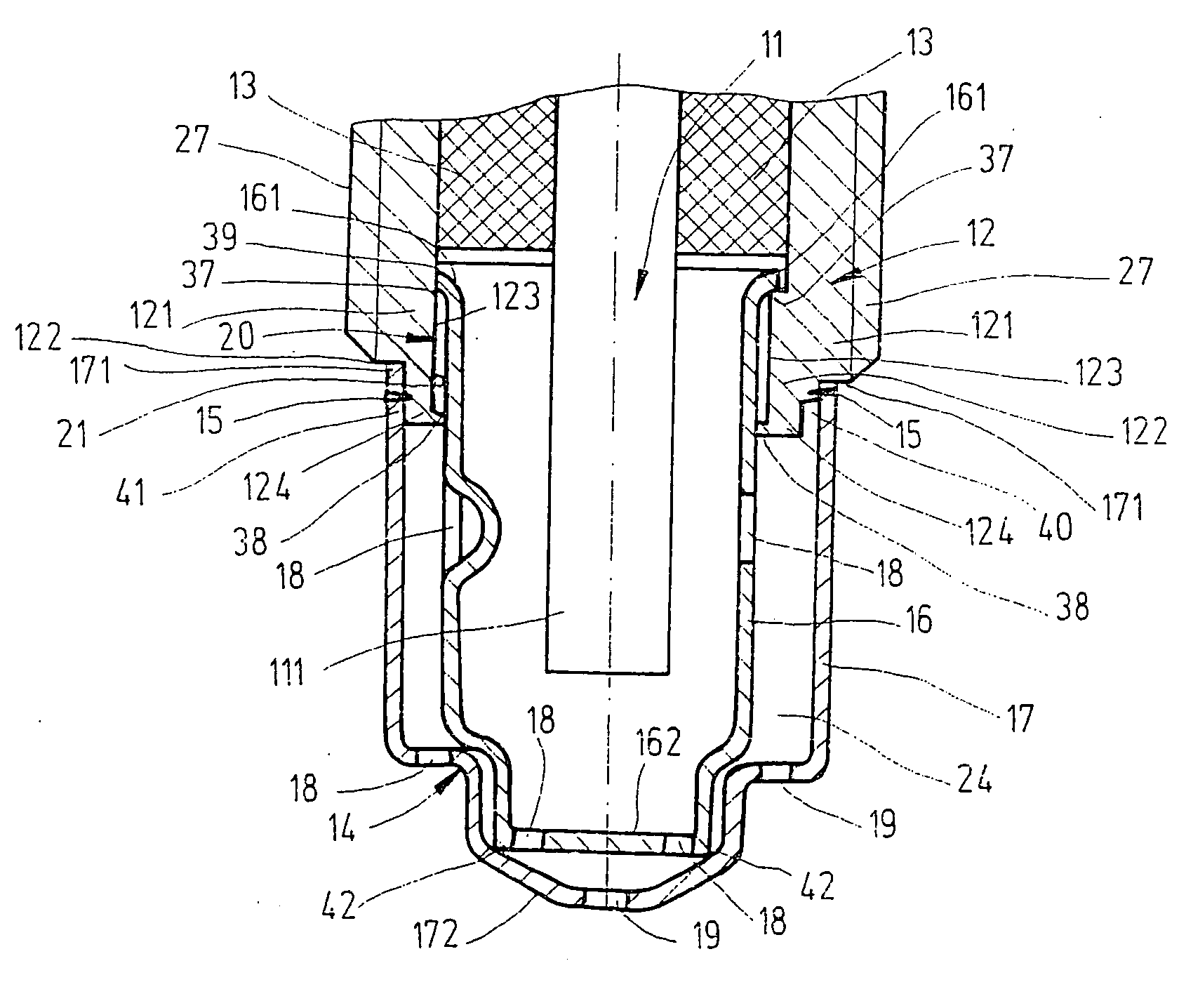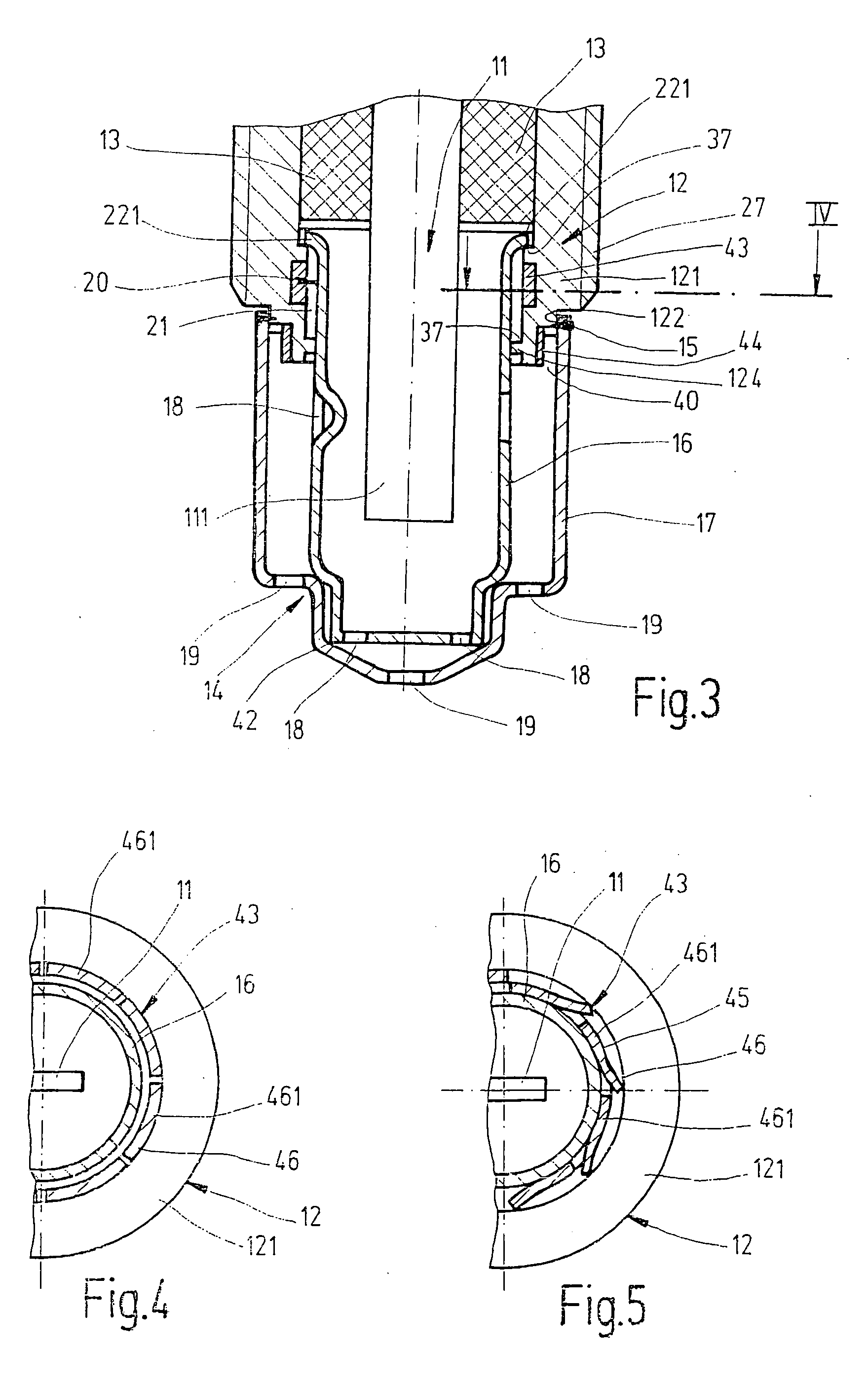Sensor
a sensor and sensor technology, applied in the field of sensors, can solve the problems of total breakdown of the sensor, cracks in the ceramics, etc., and achieve the effects of improving the temperature shock resistance of the sensor, and reducing the damage of the sensor
- Summary
- Abstract
- Description
- Claims
- Application Information
AI Technical Summary
Benefits of technology
Problems solved by technology
Method used
Image
Examples
Embodiment Construction
[0025]The lambda sensor shown in FIG. 1 in a cut-away view in longitudinal section is used to determine the oxygen concentration in the exhaust gas of a combustion engine or an internal combustion engine. It is described as an exemplary embodiment for a general sensor used as gas sensor by which the concentration of a particular gas component in a measuring gas formed by a gas mixture is measured.
[0026]The lambda sensor has a sensor element 11, which is made of ceramic and has a measuring-gas-side end section 111 exposed to the exhaust or measuring gas, and a connection-side end section, which is not shown here, where the electric contacting of sensor element 11 for the connection to a control and evaluation device is implemented. Sensor element 11 is accommodated in a housing 12 of which only the lower measuring-gas-side end region 121 is shown in FIG. 1, where housing 12 encloses measuring-gas-side end section 111 of sensor element 11 with reduced radial clearance. Sensor element ...
PUM
 Login to View More
Login to View More Abstract
Description
Claims
Application Information
 Login to View More
Login to View More - R&D
- Intellectual Property
- Life Sciences
- Materials
- Tech Scout
- Unparalleled Data Quality
- Higher Quality Content
- 60% Fewer Hallucinations
Browse by: Latest US Patents, China's latest patents, Technical Efficacy Thesaurus, Application Domain, Technology Topic, Popular Technical Reports.
© 2025 PatSnap. All rights reserved.Legal|Privacy policy|Modern Slavery Act Transparency Statement|Sitemap|About US| Contact US: help@patsnap.com



